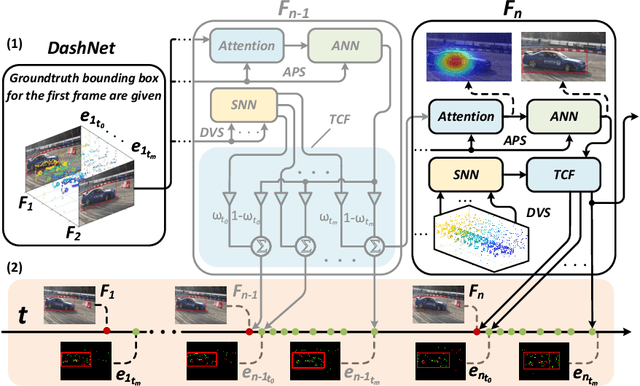DashNet: A Hybrid Artificial and Spiking Neural Network for High-speed Object Tracking
Paper and Code
Sep 15, 2019



Computer-science-oriented artificial neural networks (ANNs) have achieved tremendous success in a variety of scenarios via powerful feature extraction and high-precision data operations. It is well known, however, that ANNs usually suffer from expensive processing resources and costs. In contrast, neuroscience-oriented spiking neural networks (SNNs) are promising for energy-efficient information processing benefit from the event-driven spike activities, whereas, they are yet be evidenced to achieve impressive effectiveness on real complicated tasks. How to combine the advantage of these two model families is an open question of great interest. Two significant challenges need to be addressed: (1) lack of benchmark datasets including both ANN-oriented (frames) and SNN-oriented (spikes) signal resources; (2) the difficulty in jointly processing the synchronous activation from ANNs and event-driven spikes from SNNs. In this work, we proposed a hybrid paradigm, named as DashNet, to demonstrate the advantages of combining ANNs and SNNs in a single model. A simulator and benchmark dataset NFS-DAVIS is built, and a temporal complementary filter (TCF) and attention module are designed to address the two mentioned challenges, respectively. In this way, it is shown that DashNet achieves the record-breaking speed of 2083FPS on neuromorphic chips and the best tracking performance on NFS-DAVIS and PRED18 datasets. To the best of our knowledge, DashNet is the first framework that can integrate and process ANNs and SNNs in a hybrid paradigm, which provides a novel solution to achieve both effectiveness and efficiency for high-speed object tracking.
 Add to Chrome
Add to Chrome Add to Firefox
Add to Firefox Add to Edge
Add to Edge